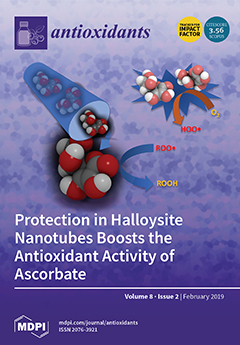The oil obtained from the seeds of
Nigella sativa L. (
N. sativa), also known as black cumin, is frequently used in the Mediterranean area for its anti-inflammatory, anti-oxidant, and anti-cancer activities. The aim of the present study was to evaluate the
[...] Read more.
The oil obtained from the seeds of
Nigella sativa L. (
N. sativa), also known as black cumin, is frequently used in the Mediterranean area for its anti-inflammatory, anti-oxidant, and anti-cancer activities. The aim of the present study was to evaluate the antioxidant and anti-inflammatory properties of the oil extracted from seeds of a
N. sativa cultivar produced in the Marche region of Italy, and to determine if the thymoquinone content, antioxidant properties, and biological activity would decay during storage. Cytotoxicity and anti-inflammatory properties of
N. sativa oil were tested in an in vitro model of low-grade inflammation in Simpson–Golabi–Behmel syndrome human pre-adipocytes. The fresh extracted oil (FEO) contained 33% more thymoquinone than stored extracted oil (SEO), demonstrating that storage affects its overall quality. In addition, the thymoquinone content in the
N. sativa oil from the Marche region cultivar was higher compared with other
N. sativa oils produced in the Middle East and in other Mediterranean regions. Pro-inflammatory cytokines (e.g., Interleukin (IL)-1alpha, IL-1beta, IL-6) were differently modulated by fresh and stored extracts from
N. sativa oils: FEO, containing more thymoquinone reduced IL-6 levels significantly, while SEO inhibited IL-1beta and had a higher antioxidant activity. Total antioxidant activity, reported as µM of Trolox, was 11.273 ± 0.935 and 6.103 ± 0.446 for SEO and FEO (
p = 1.255 × 10
−7), respectively, while mean values of 9.895 ± 0.817 (SEO) and 4.727 ± 0.324 (FEO) were obtained with the 2,2-diphenyl-1-picryl-hydrazyl-hydrate (DPPH) assay (
p = 2.891 × 10
−14). In conclusion, the oil capacity to counteract proinflammatory cytokine production does not strictly depend on the thymoquinone content, but also on other antioxidant components of the oil.
Full article






